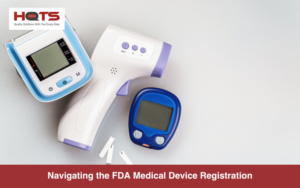Hard goods are often described in a retailer’s inventory by whether they come in boxes or not. Small appliances do usually come in boxes, whereas sporting equipment does not, for example.
Manufacturers and marketers of hard goods sometimes aim to increase the appeal of their products by trying to minimise the package sizes as much as possible so that the retailers need less shelf space to stock products. This benefits the retailer as it allows for stocking more items and reduces shelf space for displays.
But what kind quality control for hard goods is needed to ensure they are effective and safe additions to our daily lives at home?
Ceramic and glass
Ceramic and glassware play a unique role in contributing to a healthy life and a clean environment, especially when they are used as food containers. With mounting concern regarding safety issues, and the implementation of even stricter regulations, it is imperative for manufacturers and buyers to be sure their products are tested to market-specific and regulatory standards.
Glassware or ceramic products are used for furnishing, decoration, medical equipment, beakers in laboratories and for various other purposes. Measuring the impact strength of glasses and glass panels where the glasses usually come into direct contact especially when moving home makes sense.
HQTS QAI testing lab
HQTS-QAI has been helping companies ensure the unique safety and compliance requirements of a broad range of hardgoods since 2003. To meet these increasing demands, HQTS-QAI lab provides you with a full package of ceramic and glassware testing solutions to mitigate your risk and improve the bottom line in your global market. There are two major testing items carried out for ceramic and glass wear hardgoods.
Glassware and ceramic standards are instrumental in specifying, testing and evaluating the chemical, physical and mechanical properties of various materials.
FDA, Food Grade Test
Being Food and Drug Association (FD) compliant is a shorthand way of talking about materials that are safe for direct food contact covering materials that come into contact with or is used for manufacturing, packing, packaging, transporting or holding food. Both the plastics and the pigments that are used in making coloured plastic fittings and cooking utensils are examples of food-contact substances.
Lead content on surface coating
Lead testing allows you to see how much lead content a product contains. Lead can be highly toxic and exposure to it can produce a wide range of adverse health effects. It can increase blood pressure and cause fertility problems, nerve disorders, muscle and joint pain, irritability and memory problems.
The lead limit in paint and surface coatings applies to paint and other similar surface coatings in toys and other articles intended for use by children and certain furniture objects such as beds, bookcases, chairs, chests, tables, dressers and TV stands.
Lead and cadmium content
As the demand for less expensive goods increases and with the resultant supply of products from abroad, the presence and threat of consumer goods containing lead and/or cadmium is prevalent. Cadmium testing can identify the levels of cadmium within your products.
Cadmium is typically released into the environment through human activities such as mining and smelting. Mushrooms, tobacco, rice, grains and vegetables can also all be contaminated by cadmium. Once it enters the food chain, it can poison meat and is can be found mostly in liver, kidney or shellfish.
EU food grade test
Food comes into contact with many materials and articles during production, processing, storage, preparation and serving, before it’s actually consumed. Materials that are intended to come into contact with food or can be transferred to the food under normal or foreseeable use need to be tested. This includes; the containers for transporting food, machinery to process food, packaging materials, kitchenware and tableware.
Companies that supply food and food packaging companies need to comply with the EU’s food contact regulations in Europe. Food contact testing protects the health of consumers.
Physical Testing
Wipe Test
The wipe test should be performed bi-monthly in general radiation laboratories. Wipe tests should include; a copy of the wipe test submission form, filter papers, sealable plastic bags, disposable gloves, permanent markers, small bottles for water, pens and a copy of all documents. The wipe tests should be conducted using an alcohol swab, moistened glass fibres or similar materials. Once the surfaces have been wiped, the wipe can then can be transferred to the appropriate labelled sealed bag and transferred to the relevant laboratory.
Annealing
Annealing is a heat treatment process that can alter the microstructure of a material to change its mechanical or electrical properties. During manufacture, the glass can be formed into the desired form, and then the item should undergo a process called; annealing, which can help relieve any significant levels of internal stresses that may e cause cracking or shattering.
Thermal shock (glassware)
Glass is manufactured by fusing together sand, soda and lime at a high temperature. Thermal shock resistance is the ability to withstand a rapid and significant temperature change. This takes place in the laboratory by heating an item in an oven and then plunging it into cold water. The procedure is repeated until the glass shatters and cracks.
Dishwasher test
Health safety plays a big part in customers decisions when selecting goods that come into contact with food items. Dirty dishes, glasses, cups and pieces of cutlery should be tested in the dishwasher multiple times. Dishwashers should score over 65% for energy efficiency, water efficiency and longevity. The test also includes how well the dishwasher removes foods such as oats, spinach, egg yolk, baby cereal, butter, tomato juice and tea stains that have been left on the kitchenware without rinsing them first.
Water absorption test
A water absorption test can distinguish cement from insulating boards to help reduce costs and eliminate any risks. This test can determine the type of asbestos fibre within a material and examines how much water is absorbed by a dry-board over a period of 15 minutes.
Microwave test
The microwave leakage test should be carried out to see how well the food heats by absorbing microwave energy. This is achieved by placing a glass bowl with some water in it in the centre of a microwave and heating the water for exactly 2 minutes, the temperature should rise to 28-40 degrees and this indicates the microwave is heating properly.
HQTS-QAI has been helping companies ensure the unique safety and compliance requirements of a broad range of hardgoods since 2003.
Our scientific and engineering staff can provide technical guidance, quality assurance, specifications assessments, training and import-export compliance evaluation.
About HQTS
With over 25 years of experience in quality assurance, HQTS is ready to help your import and export business build a robust quality assurance plan. Our many service locations are prepared to be your one-stop-shop for inspection needs, Including production monitoring, pre-shipment and sorting inspections and everything in between. Contact us today to find out how we can help you navigate your current quality control challenges.
Related content:
Glassware Inspection and Quality Control
Sources:
cpsc.gov/Business–Manufacturing/Business-Education/Lead/Lead-in-Paint
asyousow.org/our-work/environmental-health/toxic-enforcement/lead-and-cadmium-in-food/lead-and-cadmium-in-food-faqs
blcchemicaltesting.com/chemical-testing/cadmium-testing-analysis-products/
ec.europa.eu/food/safety/chemical_safety/food_contact_materials_en
safety.uwa.edu.au/topics/radiation/radioactive-materials/wipe-test
satra.com/spotlight/article.php?id=356
choice.com.au/home-and-living/kitchen/dishwashers/articles/how-we-test-dishwashers
hunker.com/13408011/how-to-test-microwave-ovens





